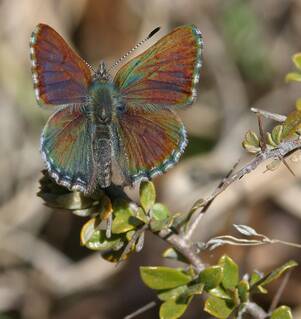The Bathurst Copper Butterfly has become part of the Department of Environment and Heritage’s new Save our Species conservation program.
Save our Species aims to maximise the number of threatened species that can be secured in the wild in NSW for 100 years.
Aware that projects to save threatened species are collaborative efforts, the program encourages the community and businesses to participate.
The Bathurst Copper Butterfly can be found at 35 locations, all within the Greater Lithgow, Bathurst Regional and Oberon local government areas. It is possible that additional locations will be identified, and that these may lie outside these areas.
Bathurst Regional Council has been heavily involved in the protection of the Bathurst Copper Butterfly and their project “Protecting and Connecting Bathurst Copper Butterfly Habitat” has been featured in a new video series created by Local Government NSW.
It demonstrates the the important role roadside vegetation plays in providing habitat for native species.”
The Bathurst Copper Butterfly is a small butterfly with a wingspan of just 20-30 mm.
The upper sides of the butterfly’s wings are copper-coloured and display a purple, blue, and green iridescence when sunning. The undersides of the wings are patterned with subtle brown, black and grey.
The butterflies emerge between August (later at higher altitude sites) and November, with a two-week peak of activity in September.
Through the Save Our Species program, members of the community are invited to ‘help save the Bathurst Copper Butterfly’ which is listed as endangered in NSW.
“All conservation work being undertaken to conserve the Bathurst Copper Butterfly around the state is vital to its recovery,” a spokesperson said.
The tiny butterfly is threatened for a number of reasons including a lack of understanding about ecology;
the small number of subpopulations; the clearing of habitat; habitat isolation, and its degradation due to access for recreation, grazing, firewood collection, roadside dust, and windblown rubbish.
The risk of too frequent or too intense fires inhibiting growth or reproduction and the effects of invasive weeds also take their toll, along with a lack of knowledge of species distribution within the site.
Subscribe now for unlimited access.
$0/
(min cost $0)
or signup to continue reading

Four sites playing home to the copperwing butterfly have been identified in NSW at Bathurst, Winburndale, Lithgow and Oberon. Regular monitoring of species abundance, extent and condition on the site will be conducted to determine population trends through time.
The Winburndale area is located within the Winburndale Reserve. The total area of the site is 103.6 hectares.
The Lithgow Footslopes covers an area of 1,282.2 hectares and is on private land.
The Bathurst Copper Butterfly is also located on private property in Oberon at an undisclosed location.
The remaining sites include Eusdale Nature Reserve, Evans Crown Nature Reserve, Marrangaroo National Park, Wambool Nature Reserve and Winburndale Nature Reserve. This total area covers 183,349 hectares.

